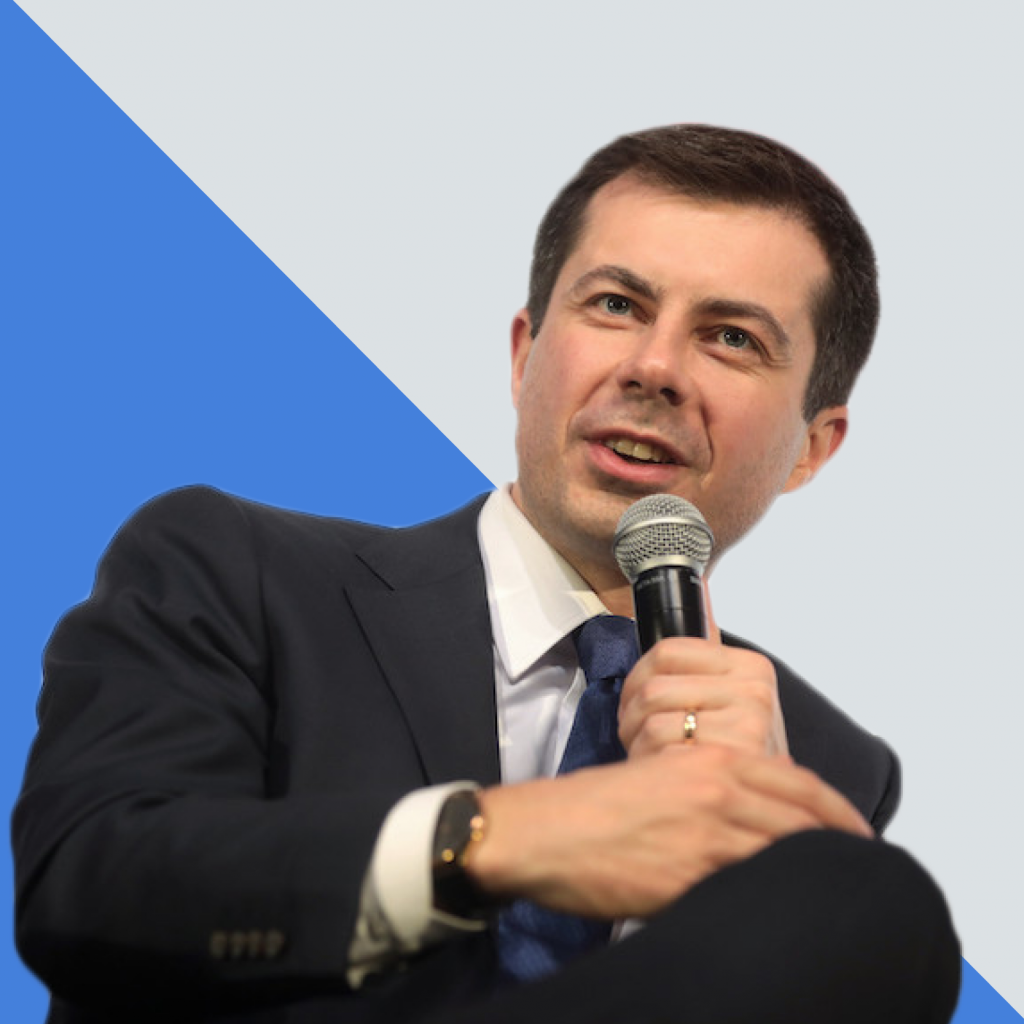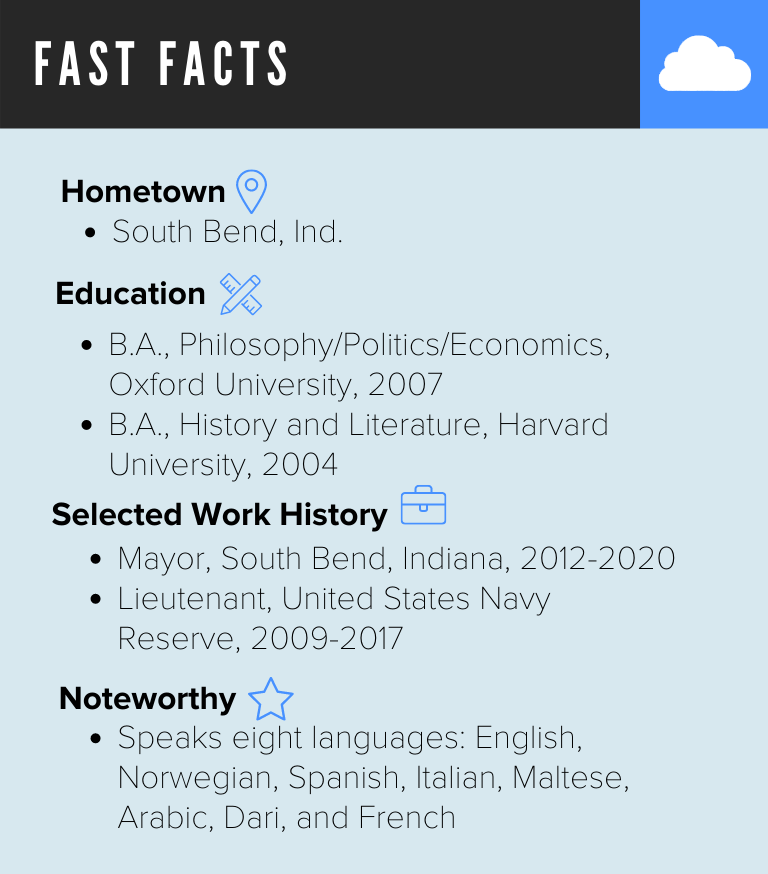Secretary of Transportation
Fast Facts

Champion for Generational Change

LEARN MORE
Vignette, a service through National Journal Research, is an essential tool for government affairs teams that need to understand the people behind the policies.
Click here to request a demo of the Vignette database, or email njvignette@nationaljournal.com to speak to someone about your access.
As a presidential candidate in 2019, Pete Buttigieg released a $1 trillion climate-change plan that called for net-zero emissions by 2050 and the creation of more than 3 million clean-energy and infrastructure jobs over 10 years.
The former South Bend, Indiana mayor didn’t win the White House, but he still has a chance to work toward those goals. While many observers expected that he might be tapped as Labor secretary or an ambassador, President Biden instead chose Buttigieg to head the Transportation Department.
The environment was top of mind when Biden announced his nomination in December, calling on Buttigieg to “deal with the existential threat of climate change with real jobs. … To build more climate-resistant communities to deal with more extreme floods, droughts, and superstorms.”
Under Buttigieg, the DOT plans to roll out a half-million charging stations, reinstate the Obama-era automobile-fuel-economy standards that the Trump administration rolled back, and invest in mass transit.
Of course, given that his boss is a noted Amtrak fanatic, it’s no shock that Buttigieg has already become an evangelist for high-speed-rail projects.
Approach and Motivations
Excerpted from Pete‘s Vignette profile
Influenced by his Midwestern upbringing, Buttigieg attempts to build consensus between progressives and centrists by advocating for generational change
- Revered his family’s legacy of military service as a child, leading him as a young man to join the Truman National Security Project, a left-leaning foreign policy organization, to show his support for the military and opposition to the Iraq War; said he was persuaded to enlist after President Obama’s inauguration because he wanted to serve under a president who inspired him
- Seeks to occupy an ideological middle ground in the Democratic Party between progressives and moderates that stresses the need for a new generation of leadership; brings polished communications skills to the Transportation Department while serving as a media messenger for the Biden administration’s major legislative proposals, including the American Jobs Plan
- Highlights his Midwestern background in political rhetoric when arguing for an empathetic approach to attract Rust Belt conservatives disillusioned by national politics; has made his Christian faith a tenet of his political identity
- Advocates a “bottom-up” approach to infrastructure reform that focuses on the needs of local, state, territorial, and tribal governments; believes infrastructure legislation provides a vessel to enact substantial climate, racial-justice, and job-creation policies.
Not a Vignette subscriber? You can purchase a digital book with in-depth profiles on everyone featured in this special report.
To learn more about Vignette, or see the platform in action, request a demo here.

